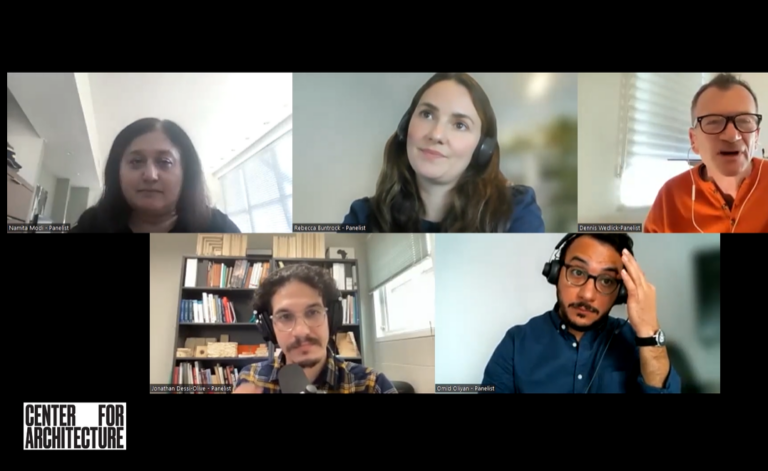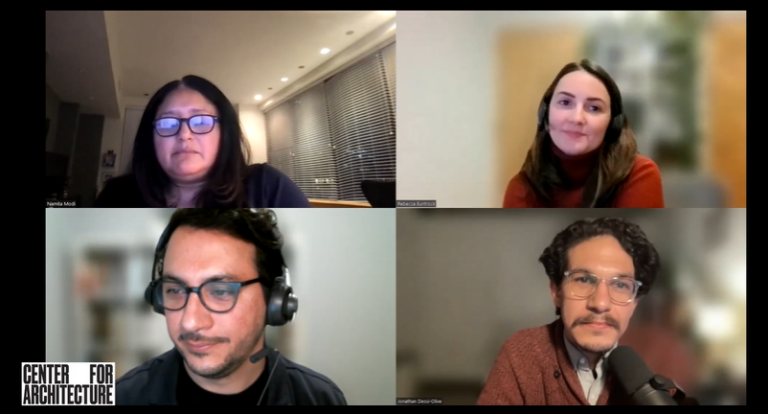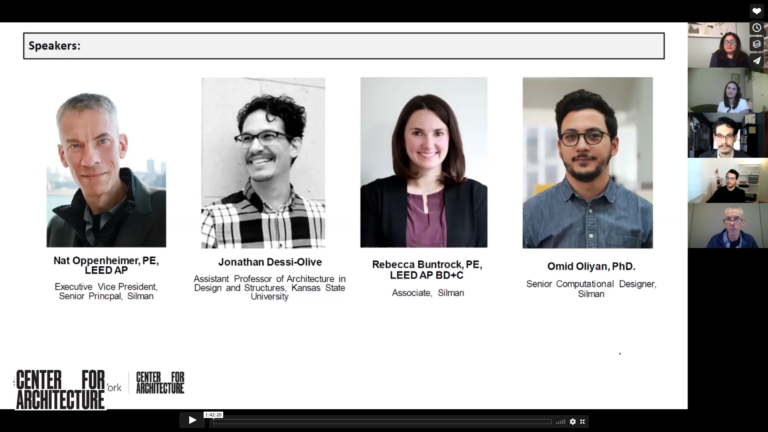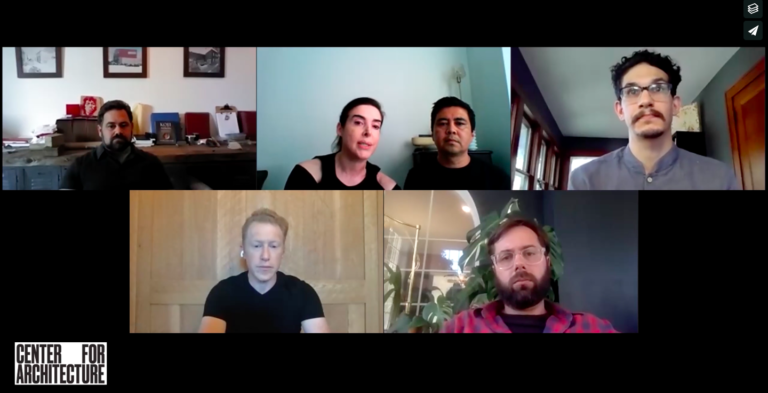“The Mycelium House” is a series of design workshops exploring the use of mycelium, the thread-like structures (hyphae) in fungi, as a residential building material in combination with other zero-carbon fibers and substrates to build tiny, tent-like shelters. Participating architects and engineers have also tapped AI technology to help design these plant-based homes of the future. Will the next generation of homebuyers be able to own extreme-green homes built with locally grown, mycelium materials?
During the past two years, the AIANY Custom Residential Architects Network has assembled a team of architects, engineers, (myco)builders, students, and specialized consultants to explore the use of mycelium as a future building material in residential construction. Through structural, computational, and physical material studies in a mock-studio setting, the first set of workshops led to the development of a new form for the material: mycelium sheets. The team’s work, consisting of physical material mockups along with structural analysis and computational designs, was shared with the broader AIANY community through an artificial reality installations at the Center for Architecture in February 2022. In the next phase of the workshops, the team is exploring the use of mycelium sheets to design a zero-carbon tiny home.
At the February 8 workshop, the team introduced their first AI-generated mycelium house, which led to an animated conversation between the research team and participants. In this final workshop, the research team will continue to explore what a mycelium home of the future framed would look like and why it would require AI technologies to bring to the marketplace.
Speakers:
Bill Browning, Hon. AIA, LEED AP, Partner, Terrapin Bright Green
Rebecca Buntrock, PE, LEED AP, Senior Associate, Silman
Jonathan Dessi-Olive, Assistant Professor of Architecture in Building Technology and Design Integration, University of North Carolina at Charlotte
Nico Kienzl, DDes, LEED Fellow, Director, Atelier Ten
Omid Oliyan, PhD, Computational Designer, OPLUS
Nat Oppenheimer, PE, Senior Vice President, Silman
Dana Cupkova, Founding Director, EPIPHYTE Lab



